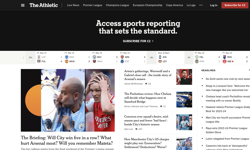Why can't mobile be ignored? Because the numbers are growing so fast: the UK already has 12m users of iOS, including iPod touch, iPhone and iPad; this will be 18m in 3 years. Consumers and business people are using mobile more and more for email, social media, research, location and pure entertainment. Here are eight practical steps for publishers, drawn from the recent Mobile Media Strategies conference:
1. Optimise website for mobile
Before going anywhere near apps, check your main website works on mobile, and users can login to subscriber areas, comment and have a seamless experience. For some markets this is all you need; there is no appetite for a bespoke app. When your mobile site is live, review stats on devices and usage to learn which platforms to focus on. Your mobile site is a marketing channel, to capture data and upsell users to paid-for apps.
2. Experiment with simple, free apps
Provide a simple, even free app and analyse how your audience uses it. The Telegraph used their first app for research, gathering a database, compiling usage stats and feedback, and using that insight to develop a full app.
3. Build in relevant functionality
If budget allows, go beyond a print replica, and build in features that help the user get more out of their interest or working day. The Good Food app has a shopping list, and a large text option when in cooking mode.
4. Plan the production process
Involve the magazine ed team from the start, as ongoing production can cost more than initial development. Good Food drive their app from InDesign pages created by the editorial team; Bonnier have built their own bespoke platform Mag+.
5. Sync pricing between print and subs
Magazine apps have an appealing “finishability” compared to the continuous, infinite website. Many publishers now offer a single subscription for access to print, app and web. Any subscriber content on the web needs to work in the same way as the app if it is paid-for. The Economist has a metered approach for app and website: users can see a number of articles for free before hitting a subs page.
6. Market widely
Use all your in-house resources (print, email database, web) to market a new app. In niche markets, the app store works well. Try GetJar in consumer markets, and email in B2B. Social media drives most mobile traffic, so make your content shareable via Facebook and Twitter.
7. Cultivate a good relationship with Apple
The mobile market is still overwhelmingly about Apple devices. But instead of seeing them as the enemy, publishers should work with them. Their 30% share is similar to retail and their data stance is softening. As many as 40-50% of app users opt to provide their details, and Apple allows incentives for data sharing; eg Telegraph offers users 7 days free access in return for their data.
8. But don’t forget the non-Apple world
There are still large audiences on Android, BlackBerry and Kindle. Many B2B markets are dominated by BlackBerry. Android will have a larger share of the smartphone market than Apple. And Kindle is proving a good revenue earner for book publishers and more text-based magazine publishers (eg Spectator). Low-cost services such as Impulse pay allow micropayments for niche content across all phones.










